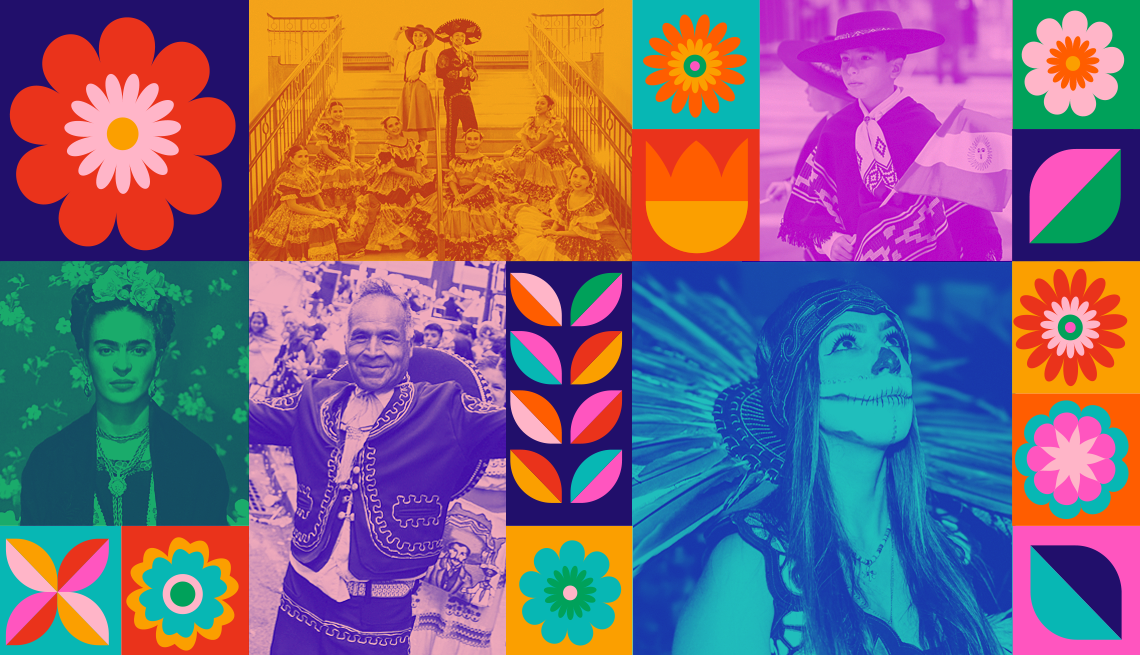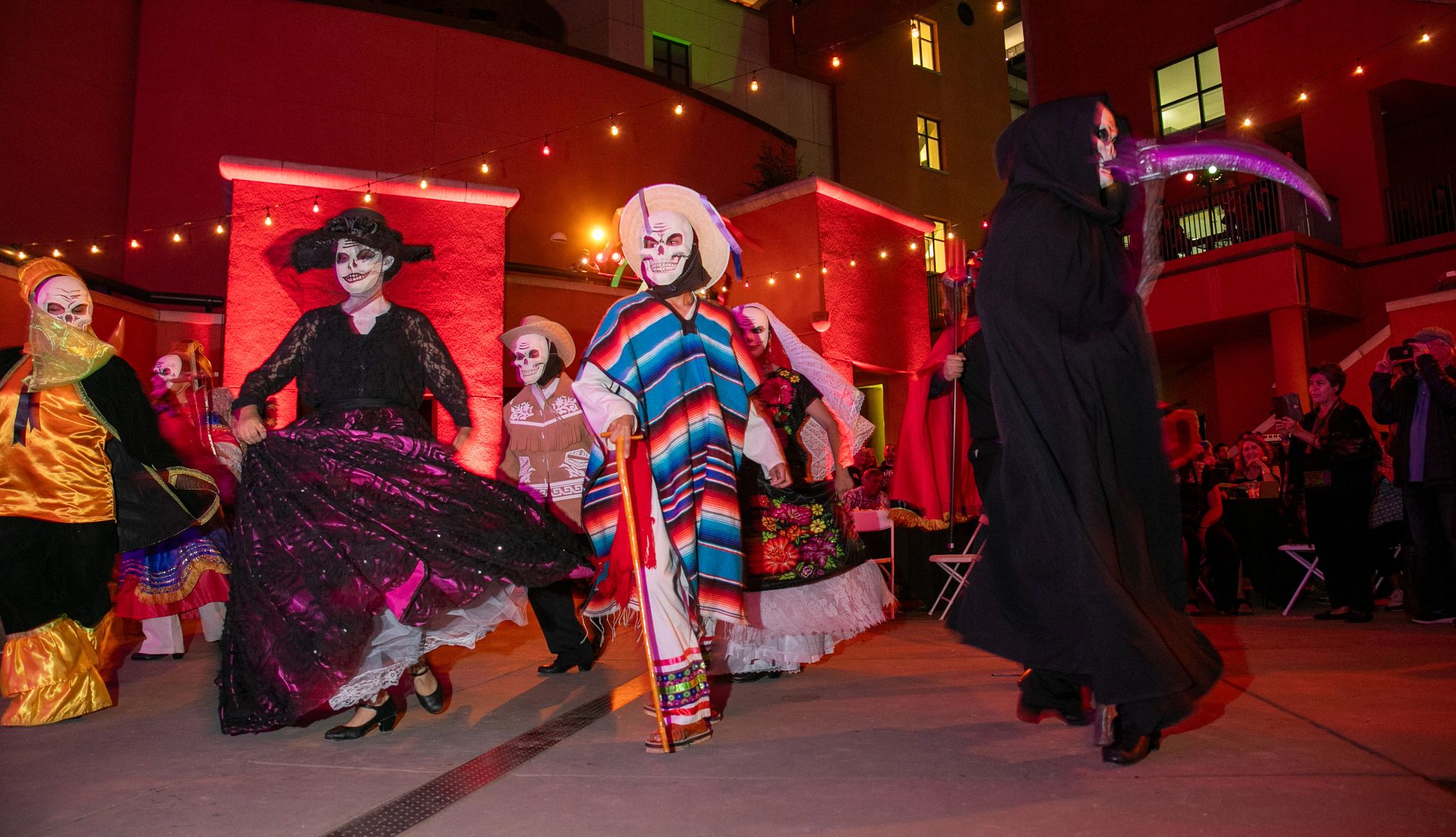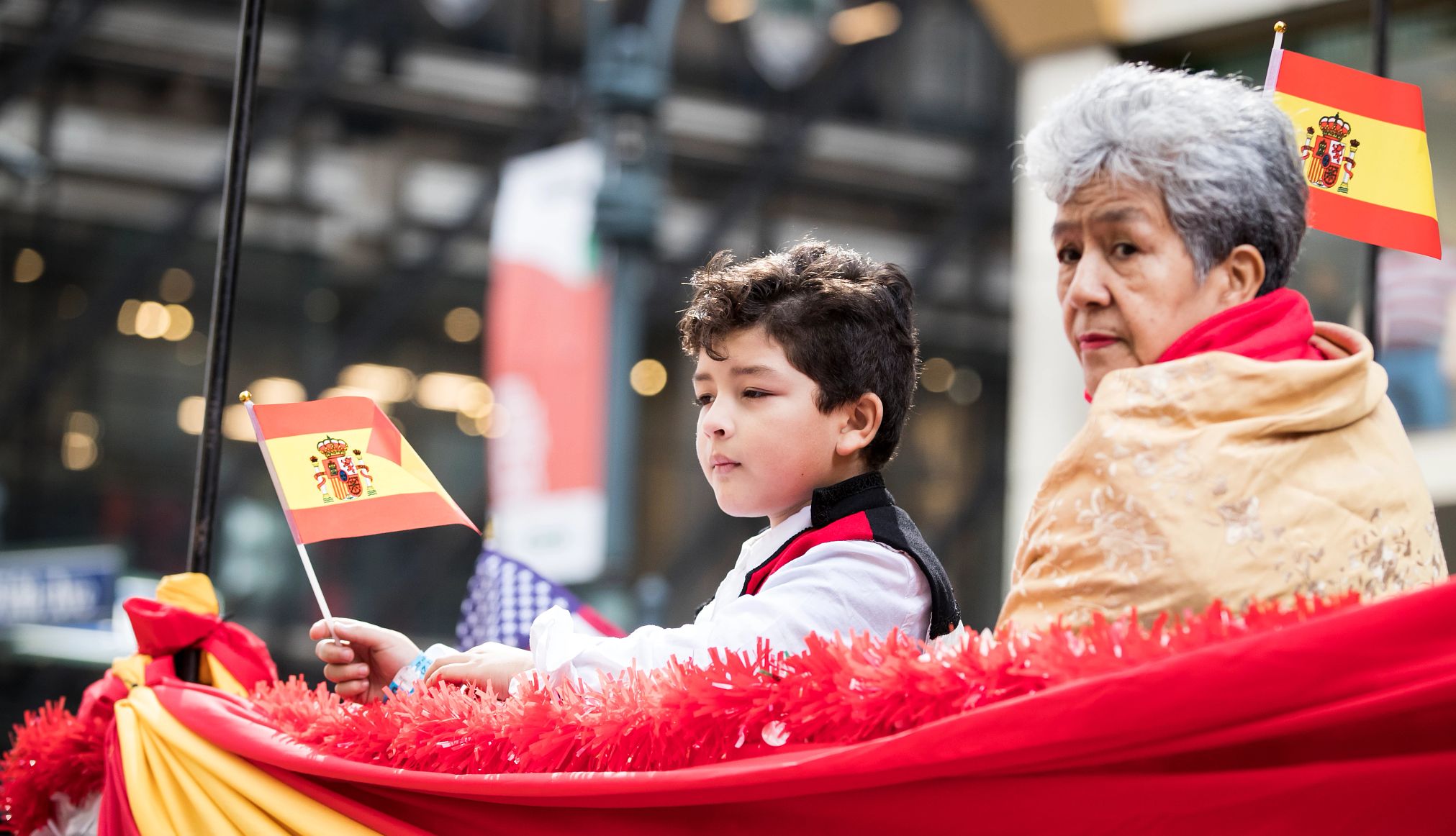AARP Hearing Center


It seems almost mandatory to start any article about Hispanic Heritage Month by defining “Hispanics” or “Latinos.” Or should we use the more inclusive terms “Latinx” or “Latine”? These lively (and necessary) debates around identity will surely continue beyond Hispanic Heritage Month. Any way you look at it, Hispanics — as the Census Bureau defines the term — are the largest minority group in the U.S. According to recently released 2023 population estimates, there are 65 million Hispanics in the U.S., accounting for approximately 19.5 percent of the population. According to the census data, there are about 10.6 million Hispanics 55 and older.
“One of the biggest misconceptions that people have about the Latino community in the United States is that we are all one and the same culture,” says David Coronado, assistant director of communications at the Smithsonian’s National Museum of the American Latino. “The reality is that we all have very different backgrounds and traditions, and it’s those things that make us very unique and special, even though we do have lots of similarities as well, especially in our foodways.”
Census statistics from 2022 bear out Coronado’s assertion. The largest group, at 37.4 million people, is of Mexican origin, representing nearly 60 percent of the Hispanic population. Puerto Ricans follow at 5.9 million people, but this figure doesn’t include the approximately 3.2 million living on the island. Six other Hispanic origin groups have populations of 1 million or more: Salvadorans, Cubans, Dominicans, Guatemalans, Colombians and Hondurans.
How did the monthlong observance meant to celebrate these rich and varied cultures come to be?
Hispanic Heritage Month — running from Sept. 15 through Oct. 15 — grew from a weeklong observance under President Lyndon B. Johnson in 1968. Twenty years later, in 1988, it was expanded to 30 days by President Ronald Reagan. The start date of Sept. 15 coincides with the independence celebrations of five Central American countries: Costa Rica, El Salvador, Guatemala, Honduras and Nicaragua. Mexico celebrates its independence Sept. 16, followed by Chile on Sept. 18 and Belize on Sept. 21. There are countless ways to celebrate the month throughout the United States — several are listed below — that also present the opportunity to learn more about Latino culture and history.
“It’s important to learn Latino history because it’s a fundamental part of the American story,” Coronado says. “It helps us tell a more accurate and complete story of the United States. Latino contributions have heavily influenced who we are today as a nation.”
Each state has a unique story to tell about Latinos from early roots through the present day, encompassing architectural landmarks, culinary traditions and influential figures. Below we spotlight a bit of that history in the four states that have the largest Hispanic populations.


1. California
Latino history in California began in 1542 with Juan Rodríguez Cabrillo. Both the Portuguese and Spanish claim him as their own, a debate that’s not likely to be settled anytime soon. What’s not arguable are the Latino contributions throughout the state. This history, from Spanish colonization to Mexican rule to U.S. statehood, lives on in California’s Mission Revival and Spanish Colonial Revival architecture. It’s also in beloved Mexican staples such as the tacos served by street vendors and high-end restaurants alike. This rich heritage has fueled cultural contributions and civil rights movements. After moving to San Francisco in his teens, musician Carlos Santana, 77, pioneered an innovative blend of rock, Latin American jazz and Afro-Cuban rhythms, setting a standard in world music. Cofounder of the association that became the United Farm Workers union, Dolores Huerta, 94, coined the rallying cry “Sí, se puede!” (“Yes, you can!”) and remains active in social justice movements. According to the most recent data provided by the census, California is the state with the largest Hispanic population, at 15.76 million.
California Hispanic Heritage Month events
San Francisco: Sept. 10 through Oct. 15 (San Francisco Public Library, various branches)
From showings of Frida and Selena to a screen printing workshop and tango class, the San Francisco Public Library is full of learning opportunities. “Our mission is twofold: that our city’s Latin American community, especially children, see their experiences reflected in our programming and their cultures celebrated; and to offer others the opportunity to learn something new and fascinating and discover the rich tapestry of cultures that make up Latin America,” says Alejandro Gallegos, community engagement manager at the library. Visit the library’s calendar for more information.
Los Angeles: Sept. 29 from 2 to 3 p.m. (LA Plaza de Cultura y Artes)
In a panel discussion, authors Carribean Fragoza, Estella González and Daniel Olivas will talk about their latest work and writing journeys. To register and find out about other AARP-sponsored Hispanic Heritage Month events in the state, from art workshops to cooking demonstrations, visit AARP’s California page.
Sacramento: Oct. 12 from 6 to 10 p.m. (California Museum)
Learn more about the new exhibit Arte de Inspiración: Dia de los Muertos 2024 at the California Museum’s annual Día de los Muertos Fiesta. Meet the exhibit’s artists, listen to live music and watch a dance performance by the Ballet Folklorico de Sacramento. For more information, visit the California Museum site.



































































More From AARP
Black, Hispanic Workers Make More 401(k) Withdrawals
Tapping accounts early widens retirement disparityTikTok Sensation Jenny Martinez’s First Cookbook Teaches the Joy of Cooking Authentic Mexican
‘Mexican Rachael Ray’ went viral for cooking birria and spun that into popular online platform and a line of cookware for JCPenney
First Woman, Latina Surgeon General Details Life of Public Service in New Book
After decades of working in the public eye, Antonia Novello says she’s not retired but in transition, and she isn’t done yet
Recommended for You